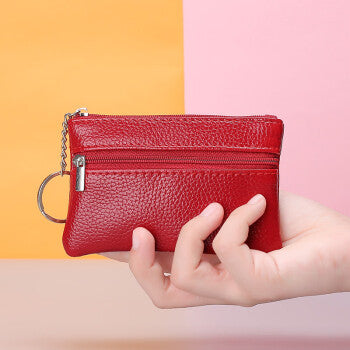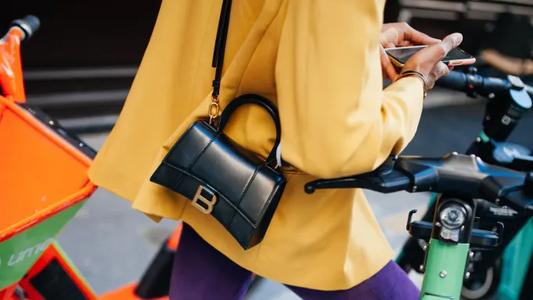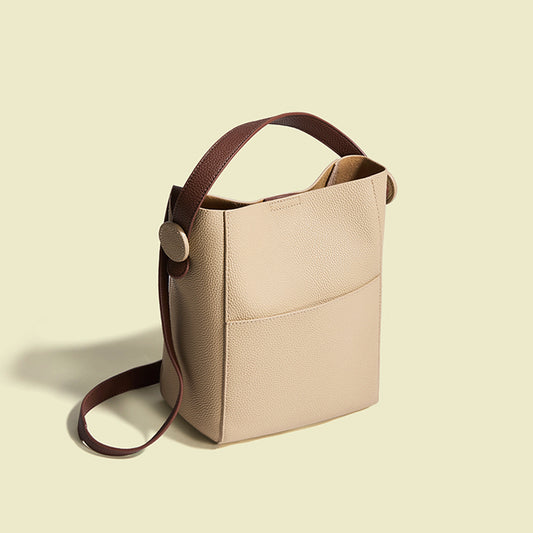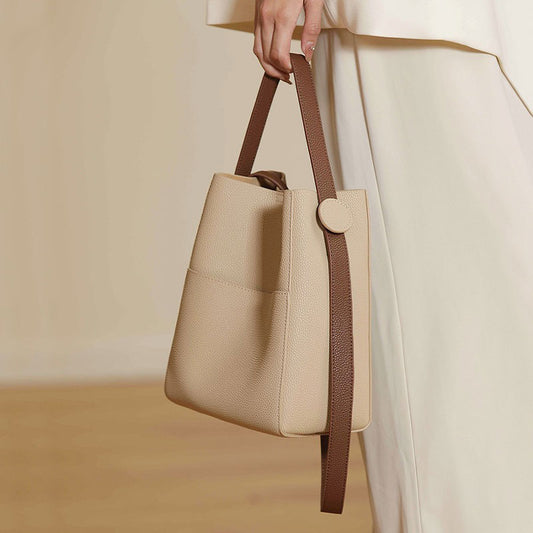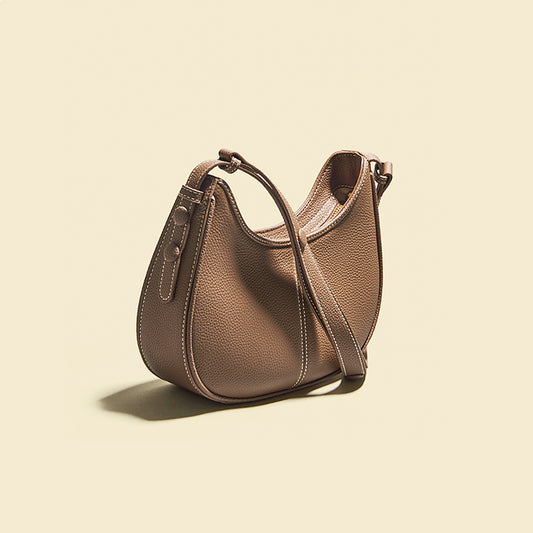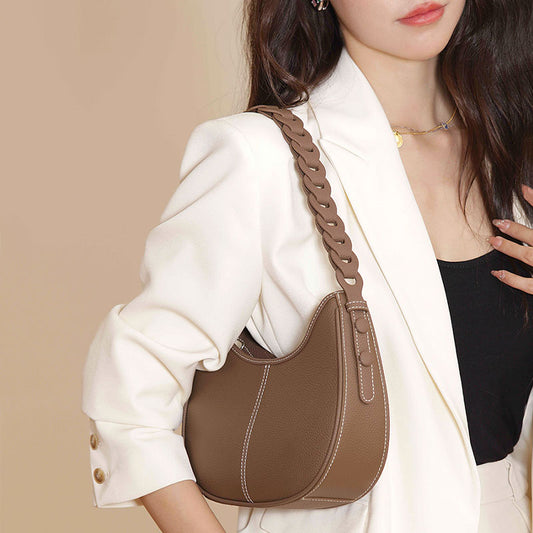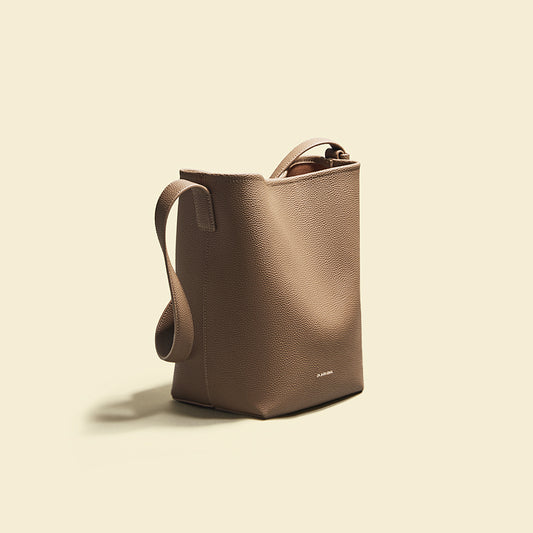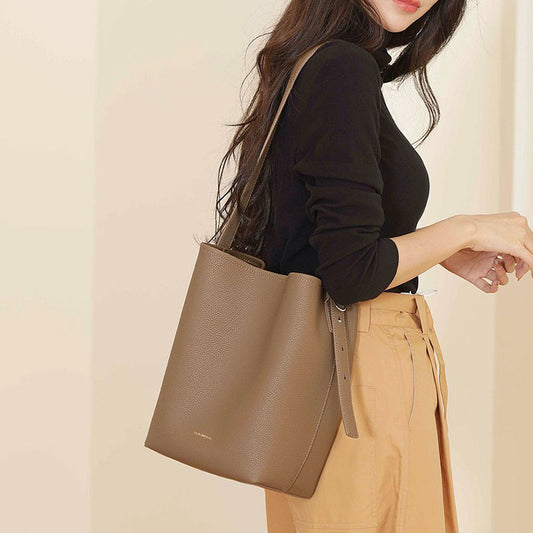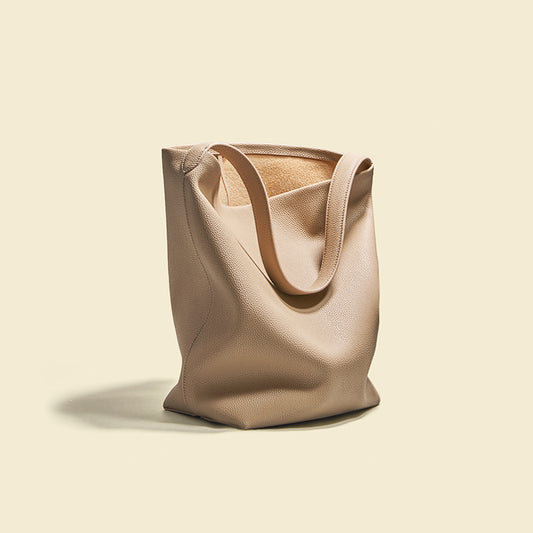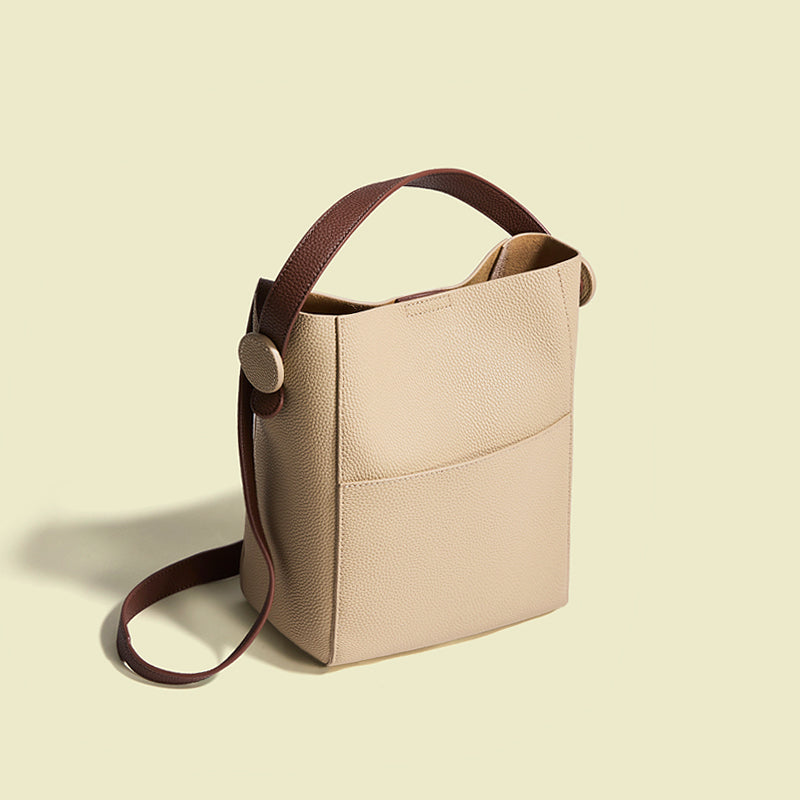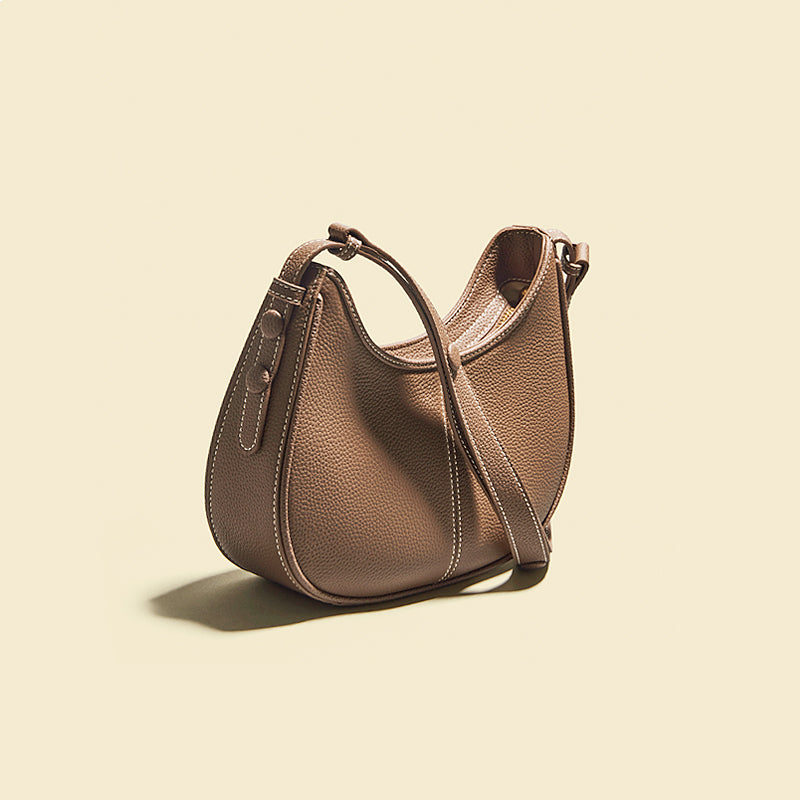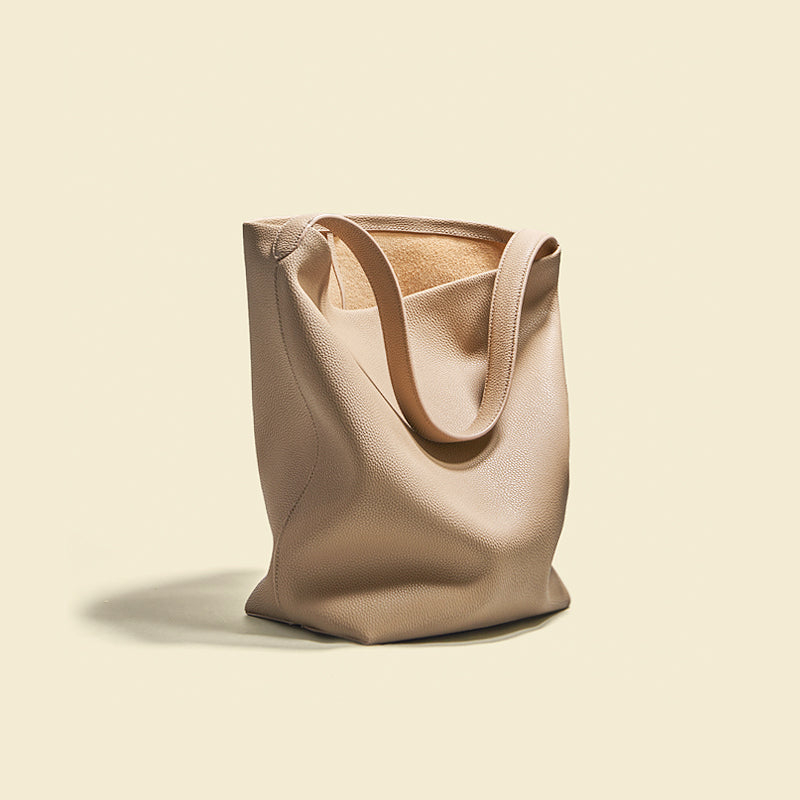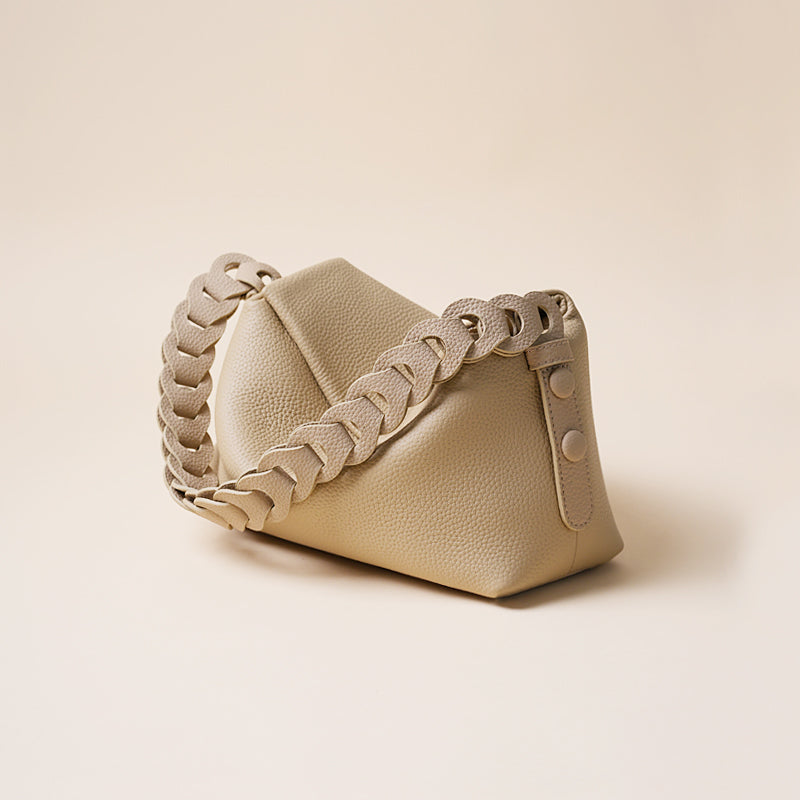Faux leathers are getting more and more realistic; there is a thin line between real and fake leather. So how do you tell them apart?
Genuine leather is leather that is taken from animals. However, just because it is genuine leather does not mean that it is real leather.
The term "genuine" simply means that the material comes from an animal, but doesn't necessarily mean that all products are high quality, This can also be confusing for people who are looking for genuine leather products only, as a lot of people think it's synonymous with "real" or "fake" leather.
Genuine leather is often used to make wallets, belts, purses, bags, and other accessories. What makes this material different from fake leather is that it has a high-quality finish and can be easily distinguished by the way it feels. The texture of genuine leather is smooth and silky, which makes it look beautiful.
Synthetic faux leather is often made of artificially foamed polyurethane.
Genuine leather is created naturally from the skins of animals like sheep, goats, and cattle. Synthetic faux leather is often made of artificially foamed polyurethane. Both materials are used in a variety of ways and have advantages and disadvantages depending on their applications.
Faux leather is cheaper than the genuine leather and can be easier to work with because it's more malleable. Additionally, it is more adaptable and may be utilized for a variety of uses that genuine leather is inappropriate for.
However, faux leather may not always be as durable or long-lasting as genuine leather if it isn't treated or maintained properly.
Genuine leather is usually more expensive than faux leather due to the scarcity of high-quality hides from wild-caught animals. However, it has many benefits over faux leather that make it worth the extra expense for some people; for example:
* The texture of genuine leather is often much softer than that of its synthetic counterpart, which makes it more comfortable to wear;
* Genuine leather breathes better than faux, which means that the wearer will feel less sweaty while wearing it;
* Faux can become discolored over time if exposed to light while genuine.
Genuine leather is made from animal skin that has undergone chemical and dye treatment.
The skin is tanned and dyed to give it a uniform color and protect the leather from moisture, UV light, and bacteria. The tanning process allows the leather to be flexible, durable, comfortable, and breathable.
Faux Leather is made from materials such as polyurethane, PVC, or vinyl that have been molded into the shape of animal hide.
Genuine leather is made from animal skin that has undergone chemical and dye treatment. It can be made from cowhide, horsehide, sheepskin, or other animal skins.
Genuine leather is a durable material that can last for a long time if it is taken care of properly. This process makes it less likely to rot, but it can still be damaged by water and other elements. Since higher grade materials are utilized in the creation of genuine leather, it costs more than imitation leather.
Plastic that has been made to resemble genuine leather is called faux leather. It tends to be less durable than the genuine leather and will not last as long if it is taken care of improperly.
Genuine leather is often used in the manufacturing of high-quality products like car seats, jackets, and purses.
Genuine leather is far thicker than faux leather.
Genuine leather is substantially thicker than imitation leather, which is the major distinction between the two types of leather. This makes it ideal for applications in which the user might not be able to tell the difference between the two types of materials, but still needs a durable material for the product.
The thickness of a piece of faux leather depends on the manufacturer and the type of faux leather used. It ranges from 0.5 mm to 2 mm, while genuine leather can be up to 4 mm thick.
Faux leather costs less than leather.
Well, it's true. And it's not just a matter of a few dollars here and there—it's usually a significant price difference.
For example, if you're looking at a jacket that costs $100, the genuine leather version will probably cost about $150 and the faux leather version will be about $75.
Why is that so? There are a few reasons, though:
1) Real leather is made from animal hide, while faux leather is usually made from polyurethane or polyvinyl chloride (PVC). This means that real leather tends to be thicker, more durable, and more flexible than faux leather.
2) Real leather has a natural color variation that makes each piece unique; faux leather doesn't have this variation because it's manufactured by machine instead of being tanned by hand like genuine leather is.
3)Real leather purse is usually made by hand, it's hard and time. Faux leather can be made from cheaper materials, like polyester, and is often mass-produced.
Genuine leather gets softer over time, while faux leather will just crack.
Genuine leather, often known as top-grain leather, will soften and develop a patina over time. Faux leather is not as durable and will crack over time.
Genuine leather is the real deal. It's animal hide, typically cowhide or pig hide, that has been tanned, dyed, and treated to make it soft and durable. The leather has a grain and may have marks from where the animal was killed or where the skin was cut from the animal.
Genuine leather is made from both vegetable-tanned and chrome-tanned leather, which are more environmentally friendly than other methods of tanning because they use fewer chemicals.
If you want your leather furniture to feel softer over time and develop a patina that makes it look more natural, go with genuine leather. But if you're looking for something easy to clean and maintain without worry about cracking or fading over time—and if you don't mind paying more—then faux leather is the way to go.
When buying a product made of faux leather, it's important to look for the most common terms such as "PU", "Bicast", "Reconstituted", and "Bycast".
1. PU leather is a very popular option for many types of goods as it is more affordable than genuine leather. While it resembles real leather in appearance and feel, it is not nearly as robust. Heat, sunshine, and water may all harm it. Because of this, you should avoid using PU on items that will be exposed to these elements often (such as wallets or shoes).
2. Bicast leather is another type of synthetic material that mimics genuine leather in appearance but is significantly more durable than PU. This type of material can be used on products as long as they are not exposed to water or humidity often (such as purses, wallets, or bags).
3. Reconstituted leather is made from scraps left over from manufacturing other products such as wood pulp or post-consumer waste materials like plastic bottles or tires. This type of material is often found on furniture upholstery because it's easy to clean and has a nice look but isn't very durable.
Genuine leather products all have a label that says what kind of animal skin they come from and whether the product is made from full-grain or top-grain leather.
Genuine leather products all have a label that says what kind of animal skin they come from and whether the product is made from full-grain or top-grain leather. On the other hand, there is no such labeling on faux leather.
The strongest and most resilient part of the cowhide, known as the full-grain layer, is used to create leather. Top-grain leather is similar but comes from the top layer of hides that are split in half to make two pieces. The split allows for a more uniform grain pattern.
Faux leather is created using a combination of polyurethane and polyvinyl chloride (PVC) plastics and bonded together with acrylic glues that give it a look similar to genuine leather.
However, faux leather has no durability, meaning it will wear out faster than genuine leather when used for similar purposes such as clothing or furniture upholstery.
The best quality faux leather looks almost exactly like genuine leather, at much less cost. It's crucial to realize that there are several grades of imitation leather as well.
Genuine leather and faux leather are two extremely comparable materials. The best quality faux leather looks almost exactly like genuine leather, at much less cost.
The most popular varieties of imitation leather are those made of PVC and PU, or polyvinyl chloride and polyurethane, respectively. These are synthetic pieces of vinyl that look very much like genuine leather, but without the animal hide involved in the manufacturing process.
There are many grades of PU and PVC, from low-quality vinyl to high-quality vinyl that is indistinguishable from real leather in appearance. You can usually tell what kind of quality you're getting by looking at the price and thickness of your faux-leather product.
The most expensive grade will have a softness similar to real leather without creasing or cracking easily after being used for a long period; whereas lower grades may feel stiff or brittle when bent repeatedly over time.
Conclusion:
In the end, the cost of genuine leather can be prohibitive. However, there are faux leather options that look almost as good and cost much less. The design professional needs to understand that there is a difference in quality within the category of faux leather products as well.
If you can distinguish and appreciate each of the nine differences, you will be able to tell genuine leather from faux leather. For example, if you look closely at the grain on real leather, it is irregular.
Genuine leather also has pores. Faux leather, in contrast, has a more uniform grain with more of a shine that is due to how light reflects off the fabric rather than how much oil is in the material. To the trained eye, there would be a very little difficulty when identifying between real and fake.

